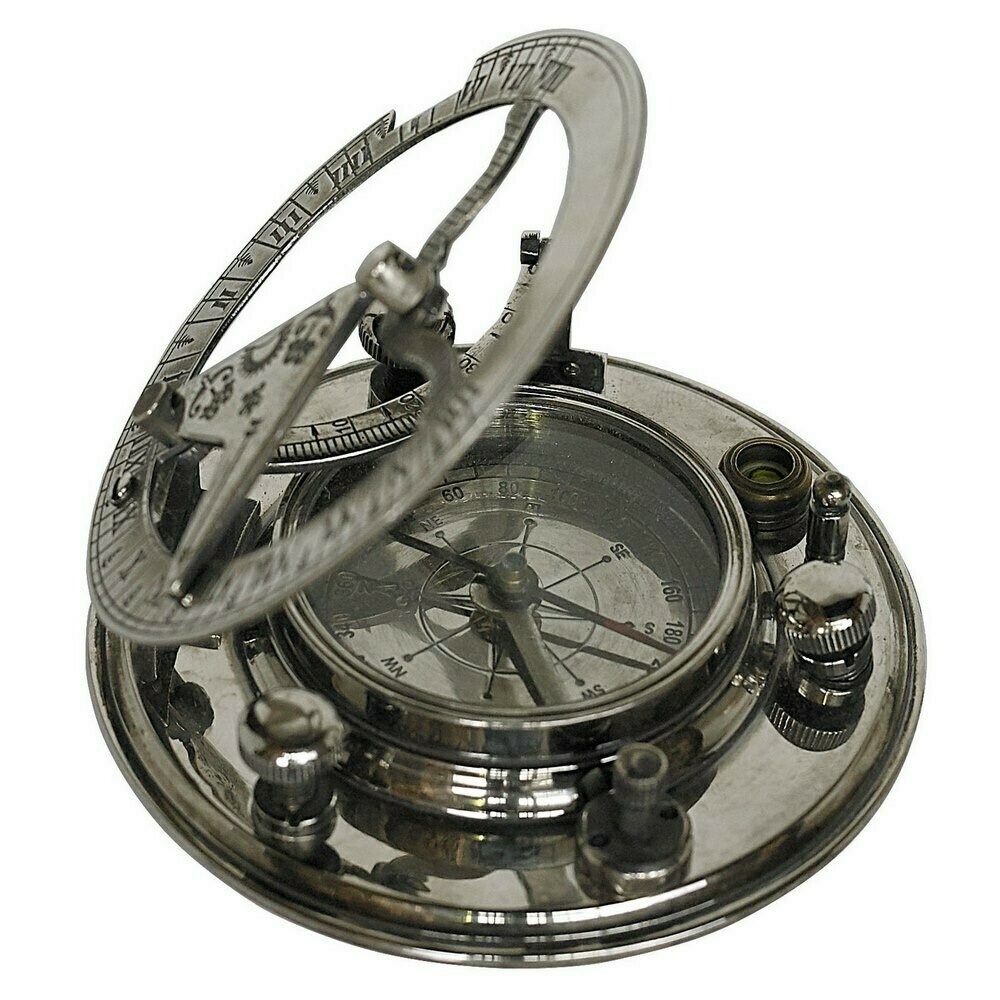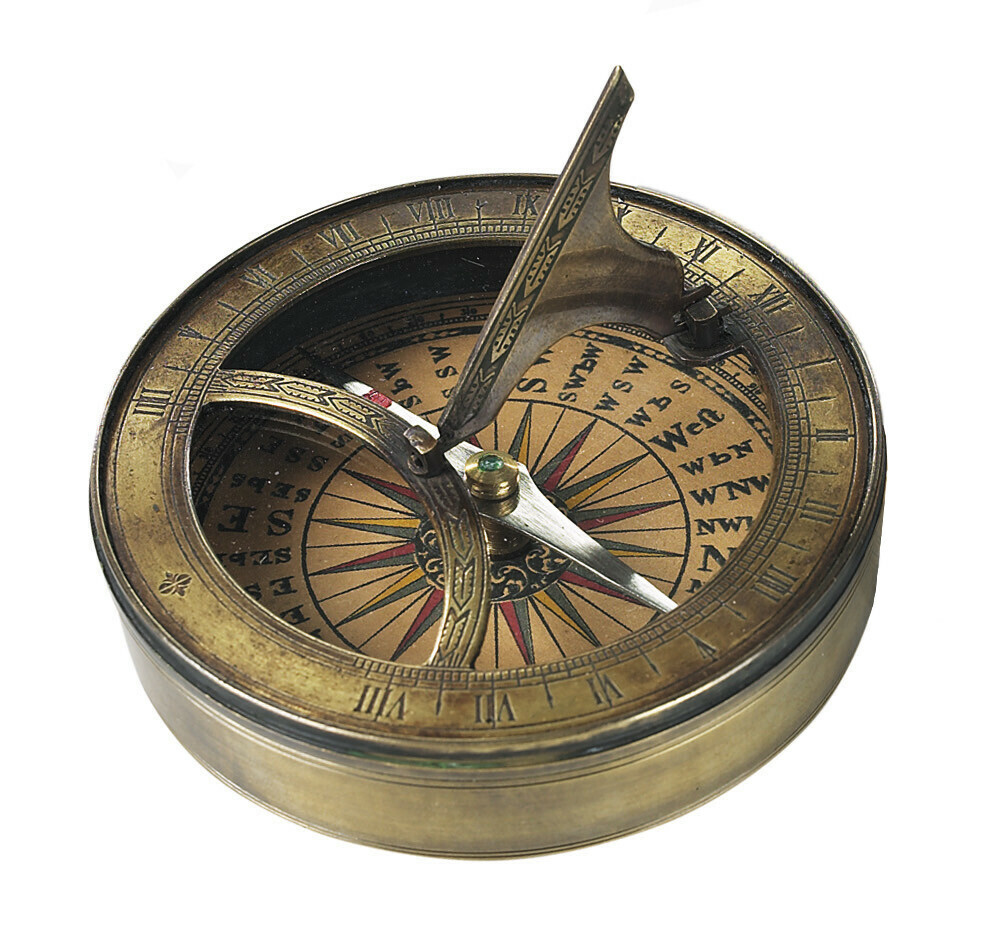Have you ever wondered how ancient mariners navigated vast, open oceans or how explorers found their way through uncharted wilderness? For centuries, one remarkable instrument has been the trusted guide for adventurers, sailors, and travellers alike: the compass. This simple yet ingenious device has shaped history, enabled discovery, and continues to be an essential tool for anyone looking to explore the great outdoors.
Let’s uncover the fascinating story of the compass, from its mysterious origins to its modern-day uses. Discover how this timeless tool works, what to look for when choosing one, and how you can use it to embark on your own adventures.
What is a Compass?
At its heart, a compass is a straightforward navigational instrument that shows direction relative to the geographic cardinal points. A standard magnetic compass contains a magnetised pointer—the needle—that aligns itself with the Earth’s magnetic field. The “north” end of this needle points towards the Earth’s magnetic North Pole, giving you a reliable and constant reference point to find your bearings.
Compasses come in various forms, from simple, pocket-sized devices to complex instruments used in ships and aircraft. But they all share the same fundamental purpose: to help you find your way.
Why Use a Compass?
In an age of GPS and digital maps on our phones, you might think the traditional compass is obsolete. However, this classic tool offers several unique advantages, especially for those who love to venture off the beaten path.
- Reliability: A compass doesn’t need batteries or a satellite signal to work. Whether you’re deep in a forest, high on a mountain, or in a remote area with no reception, your compass will always be a dependable guide.
- Durability: Most outdoor compasses are built to withstand tough conditions. They’re often waterproof, shock-resistant, and can handle extreme temperatures, making them a rugged companion for any expedition.
- Skill Building: Learning to use a map and compass is a rewarding skill. It deepens your connection with the landscape, improves your spatial awareness, and builds your confidence in the outdoors. It’s a true art of navigation that connects you with generations of explorers.
- A Perfect Backup: Even if you prefer using a GPS, a compass is a lightweight and essential backup. Technology can fail, but a magnetic compass is a failsafe tool that can help you get back on track.
The Journey Through Time: A History of the Compass
The story of the compass is a tale of innovation that spans continents and centuries. Its invention wasn’t a single event but a gradual evolution of ideas.
Ancient Chinese Origins
The journey begins in China during the Han Dynasty, around the 2nd century BC. The earliest compasses weren’t used for navigation but for divination and feng shui. These first instruments, known as “south-pointers,” were often spoon-shaped ladles made of lodestone (a naturally magnetised iron ore) placed on a bronze plate. When the spoon was spun, it would eventually come to rest pointing south.
By the Song Dynasty (around the 11th century), the Chinese had started using the compass for navigation at sea. They discovered that a magnetised needle floating in a bowl of water was a far more practical design for ships. This innovation allowed sailors to navigate the oceans with greater accuracy, even on cloudy days when the stars were hidden.
Spreading to Europe and the Middle East
The concept of the magnetic compass travelled along the Silk Road and maritime trade routes, reaching the Middle East and Europe by the 12th and 13th centuries. European sailors quickly adopted the device, which revolutionised their ability to explore. The compass was instrumental during the Age of Discovery, enabling explorers like Christopher Columbus and Vasco da Gama to embark on their world-changing voyages.
Early European compasses were simple: a magnetised needle placed on a pin inside a wooden box with a wind rose, a design that showed the cardinal directions. Over time, improvements were made, such as placing the needle in liquid to dampen its movement and make it more stable on rough seas.
Choosing Your Compass: What to Look For
Ready to get your own compass? With so many options available, it’s helpful to know what features matter most. Here are a few things to consider when buying a compass for hiking and outdoor adventures.
- Baseplate Compass: This is the most common and versatile type for hiking. It features a clear, flat base that you can place on a map, making it easy to take bearings.
- Liquid-Filled Housing: Look for a compass where the needle is housed in a liquid-filled capsule. The liquid (usually a type of oil or alcohol) steadies the needle, allowing it to settle quickly and provide a stable reading.
- Declination Adjustment: The Earth’s magnetic north and true north (the geographic North Pole) are not in the same place. This difference is called declination. A compass with adjustable declination allows you to set it for your local area, making navigation with a map much simpler and more accurate.
- Sighting Mirror: More advanced compasses often include a sighting mirror. This feature allows you to see the compass dial and a distant landmark at the same time, which helps you take more precise bearings.
- Luminescent Markings: If you plan to navigate in low-light conditions, such as at dawn or dusk, choose a compass with glowing markings on the needle and direction points.
How to Use Your Compass
Learning to use a compass is an exciting step into the world of traditional navigation. Here’s a simple guide to get you started with a baseplate compass and a map.
1. Orient Your Map
First, you need to align your map with the world around you.
- Place your compass flat on your map.
- Adjust the declination on your compass if it has that feature.
- Rotate the map and compass together until the north end of the magnetic needle aligns with the “N” on the compass dial.
- Your map is now oriented to true north. The features on the map should now correspond with the landscape around you.
2. Take a Bearing from the Map
Let’s say you want to walk from your current location (Point A) to a landmark on the map (Point B).
- Place your compass on the map so the long edge of the baseplate connects Point A and Point B.
- Make sure the direction of travel arrow on the baseplate points from A to B.
- Hold the baseplate steady and rotate the compass housing until the orienting lines inside the housing are parallel with the north-south grid lines on the map. Ensure the “N” on the dial points to the north on your map.
- The number on the dial that aligns with the direction of travel arrow is your bearing.
3. Follow Your Bearing
Now, it’s time to follow that bearing in the real world.
- Hold the compass flat and level in front of you, with the direction of travel arrow pointing away from you.
- Turn your body until the north end of the magnetic needle is inside the orienting arrow in the compass housing.
- The direction of travel arrow now points towards your destination. Pick a landmark in that direction (like a distinctive tree or rock) and walk towards it. Once you reach it, repeat the process to stay on course.
Your Adventure Awaits
The compass is more than just a tool; it’s a symbol of exploration, discovery, and self-reliance. By learning to use it, you unlock a deeper understanding of the world around you and gain the confidence to forge your own path.
So, why not pick up a compass and a map of your local area? Start with small adventures in a familiar park or nearby trail. Practice taking bearings and orienting your map. Before you know it, you’ll be ready to navigate new landscapes and discover the incredible places waiting just beyond the horizon. The journey is yours to command.



